There’s a game being played online every day… Only you might not realize it.
If you are, chances are you’re enjoying greater profits while working fewer hours than your competitors.
And if you’re not?
You’re wondering why your products aren’t flying off their digital shelves.
The game is simple:
How long can you keep visitors engaged on your site?
There are, of course, many ways to do that, but there’s one that’s more effective than any other:
The truth is, you can have the best site design in the world, the best products, the best value proposition … but if you don’t have persuasive product copy, none of the above matters.
In this article, I’ll show you how many of the best e-commerce brands online engage and entice readers to make a purchase using proven copywriting principles. And most importantly, how you can, too.
Shall we?
E-Commerce Copywriting: What You Need to Know
1. Know Who You’re Writing For
2. Harness the Power of Brand Storytelling
1. Know Who You’re Writing For
In order to know how to write compelling copy, you need to know who you’re writing for.
Once you know who you’re serving, your company’s personality (and, if need be, humor) will naturally render your copy.
A company that understands its ideal buyer is Barkbox.
Using phrases like, “Barkbox is like the joy of a million belly scratches,” and “When your dog falls in ruv with something from the box,” Barkbox write in a way that resonates with their target market: canine enthusiasts.

Puns, spoonerisms and other obscure words that only your ideal buyer would understand is a powerful way to position your product…
And it’s never been easier to research.
Sites like Quora and Reddit not only offer insight into your target market’s goals and obstacles, they also reveal how they communicate them to others.
Let’s say you’re an e-tailer specializing in men’s grooming.
One way to write copy that resonates with your ideal buyer would be to browse a subreddit related to your keyword.
r/askmen, for example, is a popular subreddit where men ask other men questions:
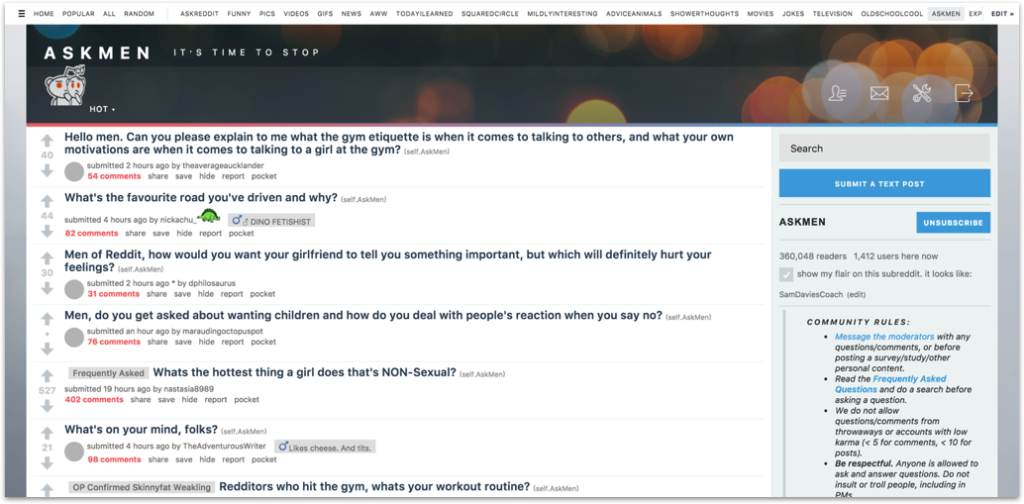
Here’s what I found when I researched “shaving”:
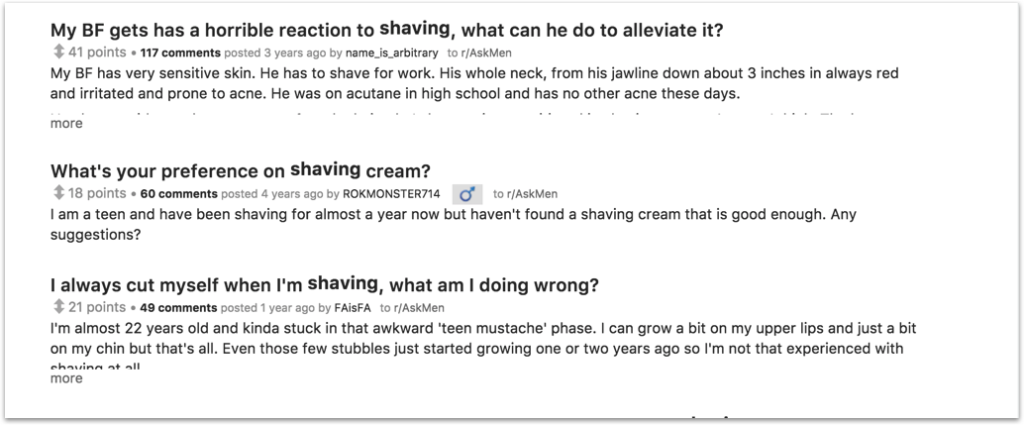
As suggested above, a common obstacle for many men when shaving is cutting oneself or irritating one’s skin.
So, if one of your products is a razor, you might use this newfound information to overcome the objection of, “Will it irritate my skin?” in your product description.
Dollar Shave Club incorporates humor in their product description to handle this very objection. Note the closing sentence below:

When you’re on the frontline, fighting your ideal buyer’s objections with them, arm in arm, communicating in a way that’s familiar, your copy will practically write itself.
2. Harness the Power of Brand Storytelling
“As far back as I can remember, I always wanted to be a gangster…”
“I was 12 going on 13 the first time I saw a dead human being…”
“People are always asking me if I know Tyler Durden…”
What do the above have in common?
They’re all examples of memorable opening lines.
Narratives do more than entertain us; they move us, emotionally (often to the point of action).
They’re why businesses weave stories into customer testimonials and how companies like Jack Daniels have popularized their brand with story-driven ads:
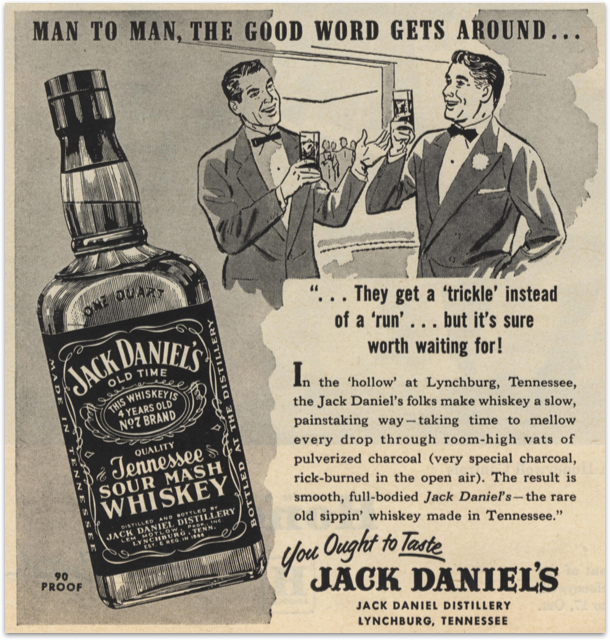
Source: Pinterest
Compelling copy, in product descriptions or otherwise, paints a picture of how the reader’s life will be different if they take the desired action (read: make a purchase). “Here’s where you are, now; here’s where you will be when you take action.”
ThinkGeek, goes one step further, combining humor, pop culture references and storytelling to create visceral imagery in the prospect’s mind:
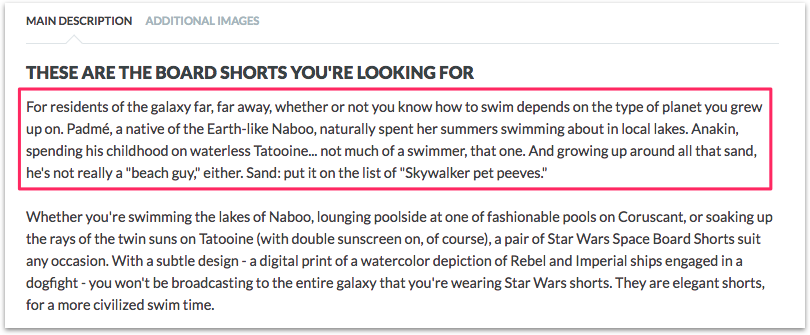
While combining storytelling with product descriptions is effective in its own right, it’s amplified even further when reflected on your about page.
Harry’s summarize who they are, who they’re for, and why they do what they do on their about page:
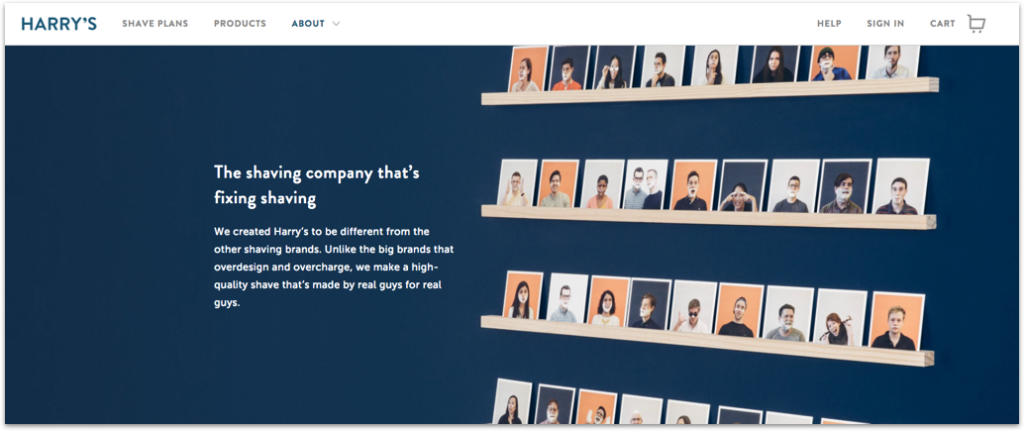
Copy like the above does more than assure visitors they’re in the right place; it reminds them the founders are people, too. They encountered a similar problem the visitor has … and decided to do something about it.
To paraphrase Simon Sinek, informing, educating and influencing your ideal buyer doesn’t come from what you do (the product or service you offer); it comes from why you do it.
And there’s no better way to do that than tell a story.
3. Write Magnetic Headlines
David Ogilvy is one of the greatest copywriters of all time.
He’s also known for prioritizing his headlines above anything else he wrote.
In his own words,
On the average, five times as many people read the headline as read the body copy. When you have written your headline, you have spent eighty cents out of your dollar.
Ogilvy was famous for writing twenty headlines for each ad he wrote for this very reason.
And although you don’t have to emulate Ogilvy (though it might help), you do need to think about what you’re trying to communicate in your product description headlines.
According to Copyblogger, 8 out of 10 people will read your headline copy, but only 2 out of 10 will read the rest. And those who do, have an attention span of 8.25 seconds.
With that in mind, writing magnetic headlines from the offset is more important than ever.
While good headline writing goes beyond this article, there are a few things you can do to quickly and easily improve their effectiveness:
One way to do that is to incorporate one or more of the four U’s in your headline writing.
Here’s a brief overview:
i. Unique
If you want to rise above the fray in today’s noisy online marketplace, you need to differentiate yourself from your competitors.
And there’s no better way than having a unique angle or value proposition in your headline.
Take a look at the two examples below.
Which piques your interest more?
Example A…
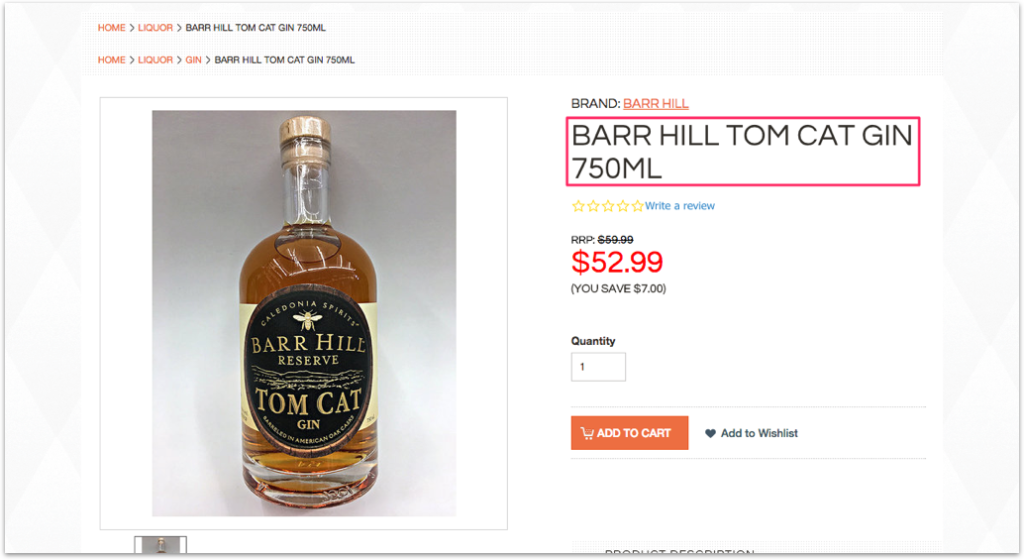
…or, Example B?
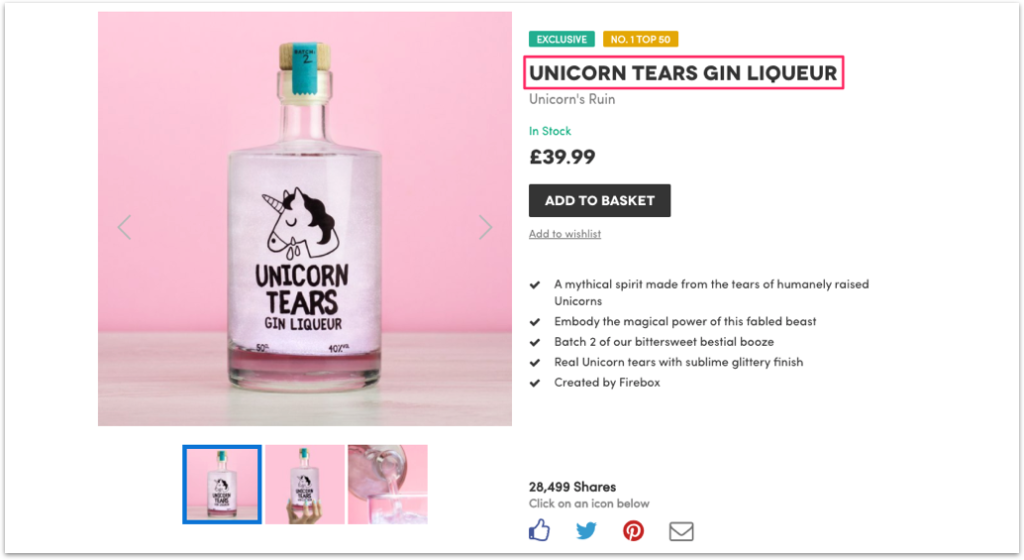
If you’re not a gin connoisseur or concerned with price, you probably chose Example B.
Why?
Because it’s highly unique.
Product description like the above is common for Firebox. They’re funny, unique and attract a ton of free press because of it:
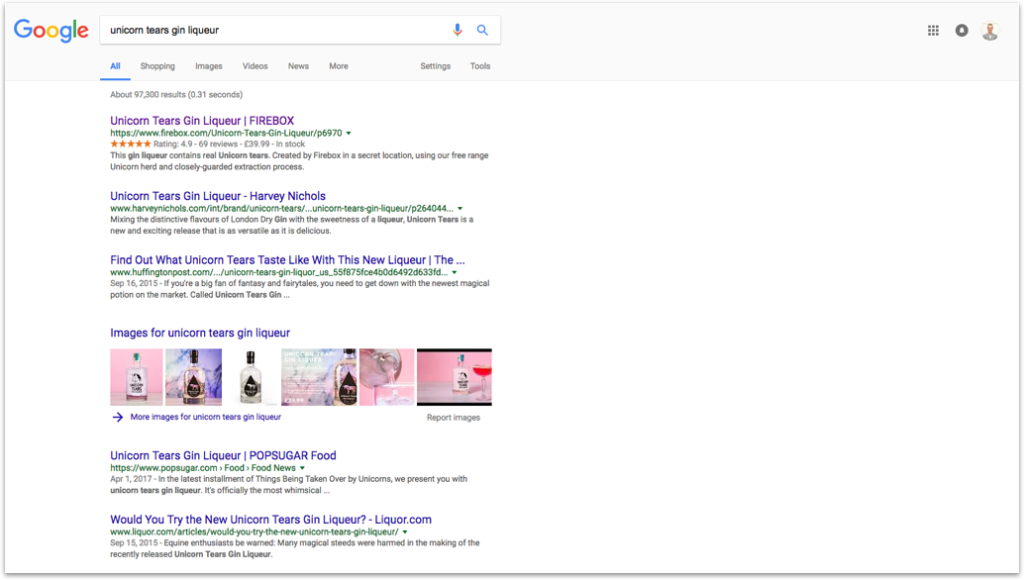
It’s important to mention here, copy like the above is consistent with Firebox’s voice. They know exactly who their market is and who they’re writing for (by their own admission they’re “Not for everyone”).
This is why knowing who you’re writing for is crucial. The greater your understanding of your audience, the more you can differentiate yourself with your copy.
ii. Ultra-specific
Specificity is a key element of writing magnetic headlines.
And although it can pertain to numbers (numbers in headlines are known to generate 73% more social shares and engagement), it’s most effective when it demonstrates who your brand is for (and equally, not for).
FiftyThree specifies exactly who their ideal buyer is in their headline (spoiler alert: it’s everyone):
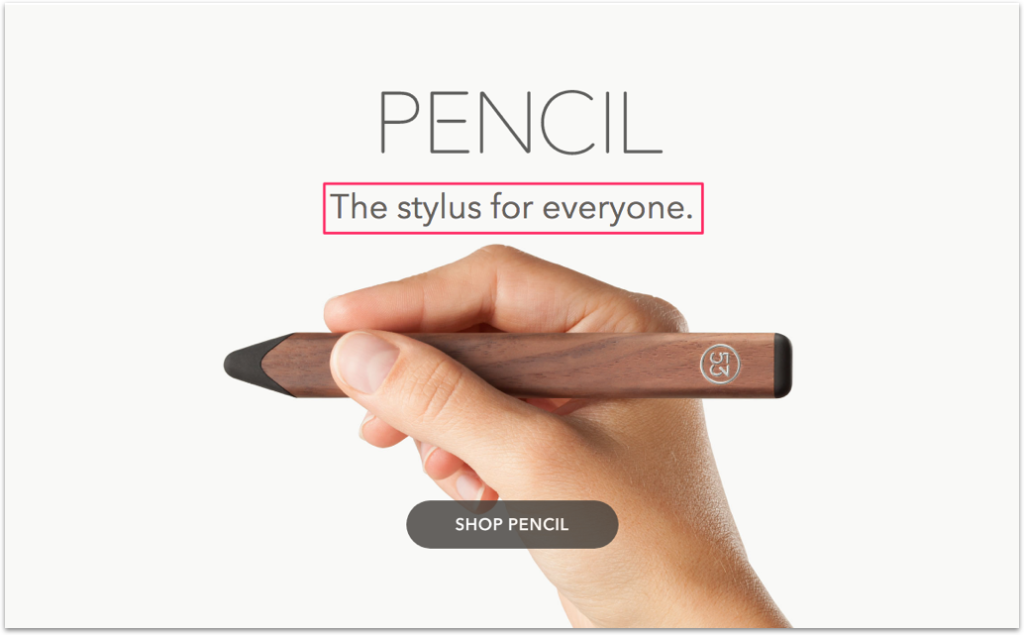
Visitors need to know, immediately, whether they’re in the right place and whether what you’re offering is relevant to their needs and interests.
And if they know they are, they’re more likely to read your product copy (and hopefully make a purchase).
iii. Urgent
You probably already know urgency increases e-commerce conversions.
Why?
Because it forces consumers to make a decision.
The fear of missing out (FOMO) is a real concern for most people.
Sockbox uses urgency in their headline to nudge prospects off the fence and make a purchase before the month’s shipment goes out:
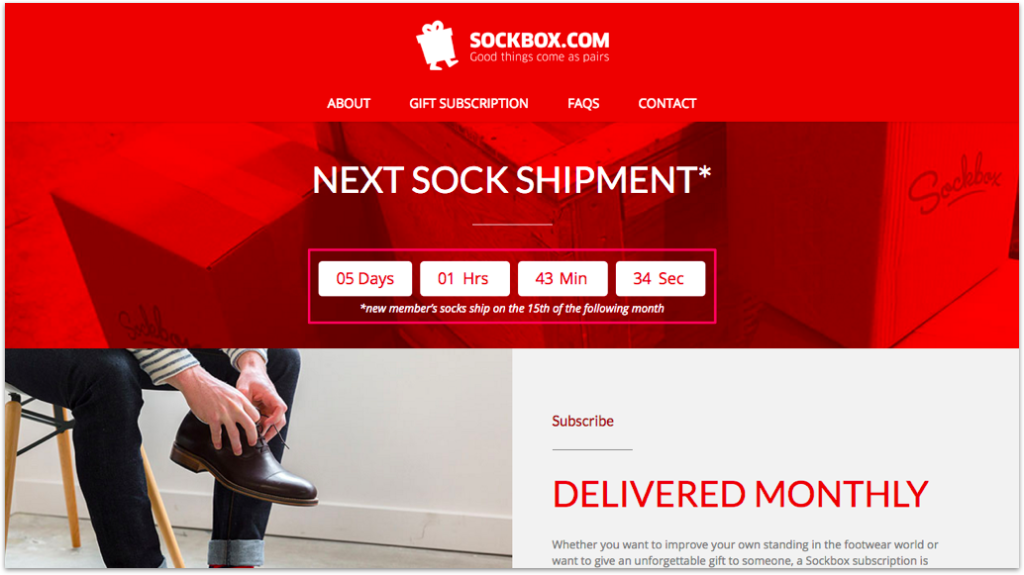
You don’t always have to rely on urgency to move potential buyers to action…
But it might help.
iv. Useful
In a study of 7,000 New York Times articles, Jonah Berger found useful content is more likely to go viral.
In his own words,
“Practically useful content may be more viral because it provides information.”
Makes sense, right? The more information a prospect has, the easier it is to make a purchasing decision.
It’s no surprise, then, many e-tailers focus on useful headlines for their product descriptions.
Crate and Barrel write helpful headlines by asking the visitor which lighting fixture best meets their preference:
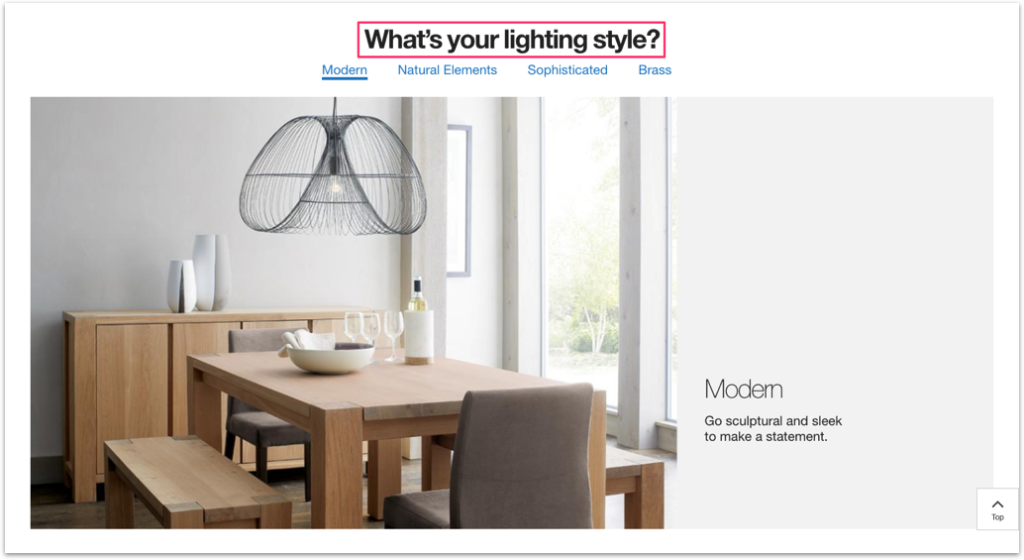
When you combine one or more of the four Us, your headlines will attract attention and your readers will naturally move on to read your product copy.
4. Use Adjectives Sparingly and Verbs Frequently
If you’re anything like me, your high school creative writing assignments can be summarized by one recurring remark:
“Needs more adjectives.”
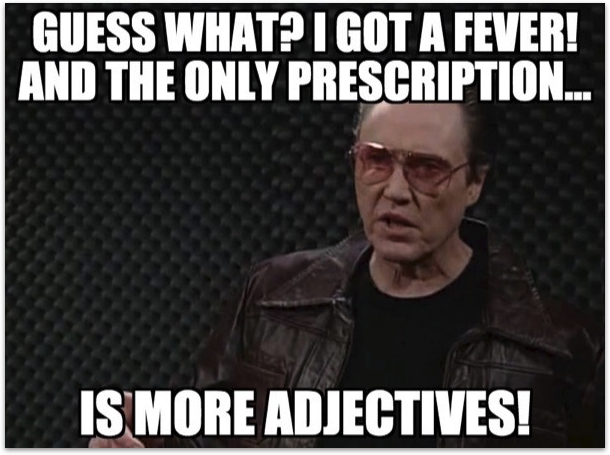
But we’re not writing to entertain.
We’re writing to sell.
And that means using fewer adjectives and more verbs.
In an analysis of college applications, Dee Leopold, managing director of admissions for Harvard Business School, found applications that included verbs were more likely to be accepted than those that favored adjectives.
Similarly, when writing product copy, verbs outperform adjectives because they help move the reader toward the desired result.
Take a look at the below example from Crowd Content.
Which, in your opinion, is more persuasive?
“This beautiful necklace is perfect for your fashionable tastes.”
Or,
“This necklace will satisfy the desires of the fashionista in you.”
The former describes the product, but the latter addresses the needs of the buyer.
Much more effective, right?
If you insist on including adjectives in your copy, you need to make them count.
One way to do that is to include sensory adjectives in your copy.
When combined with storytelling, sensory adjectives help the reader visualize what they’re reading about and encourages them to invest in the product further.
Blue Apron rely on sensory adjectives like “juicy” and “flavorful” to entice readers to try their menus:
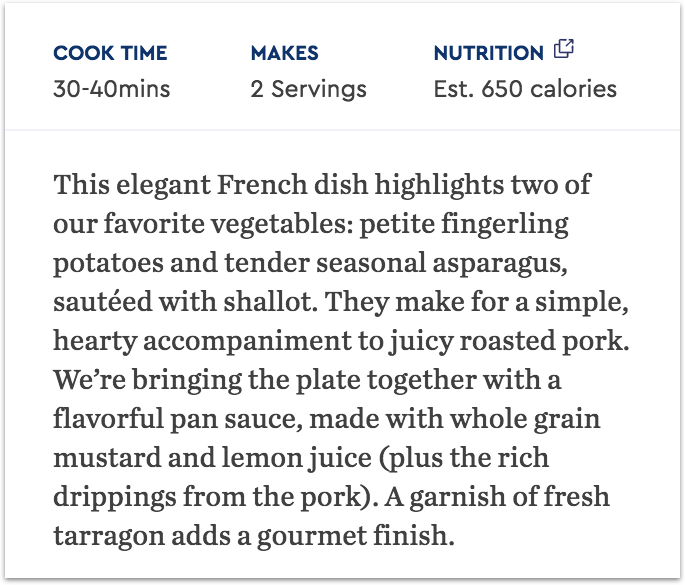
As you can probably imagine, future pacing the desired result can evoke strong emotions in the reader.
But emotion on its own isn’t enough to motivate the reader to take action.You need to lead them by the hand and take them exactly where to go (ht: Gary Halbert).
And there’s no better way to do that than in your call-to-action (CTA).
While having “Add to cart” copy is a no-brainer for most e-tailers, there’s no harm in having a CTA in your product description, too.
ScoutBooks outline exactly what they want their visitors to do in the product descriptions, step-by-step:

The more instruction you give the reader, the easier it is for them to know what to do (and the faster you can turn casual visitors into paying customers).
Listen to Joanna Wiebe discuss this below:
5. Focus on Benefits Over Features
It’s a classic scene.
You’re interviewing for a job and the employer utters four words candidates pray they won’t hear:
Sell me this pen.
If it’s happened to you, chances are, one of two things happened next:
You explained the pen’s features, what it is or does, its color, its weight, etc.
Or, you outlined the benefits of owning the pen. Specifically, how it would improve the owner’s life.
The truth is, while it’s tempting to wax on about a product’s ins-and-outs, most people don’t care about what your product is or does.
Rather, they care about how what you’re offering can help them bridge the gap between where they are now and where they want to be.
As Ray Edwards says, “Everyone’s favorite FM radio station is WIIFM: what’s in it for me?”
A good rule of thumb to follow when writing product descriptions, then, is to tie a benefit to every feature you write.
Notice how Intelligent Change, in the below example, focus on the after effect of buying The Five-Minute Journal:
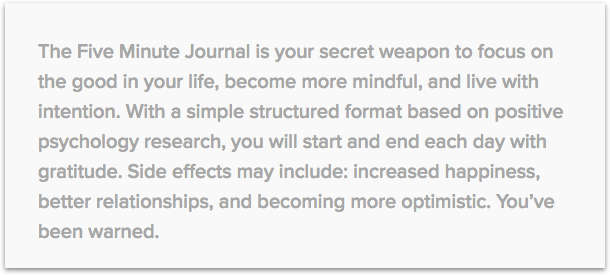
There’s no mention of the material the journal’s made from or the paper it’s printed on … all that matters is how it will improve the buyer’s life.
Depending on your page’s layout, benefits can be written in the copy itself (like above) or using bullet points.
If it’s the latter, your bullets will often be organized using an information hierarchy, with the most persuasive bullets at the top and bottom, with general benefits in-between.
Here’s an example from T-Fal promoting their non-stick frying pan.

When you combine best practices such as playful humor, brand storytelling, and benefit-driven copy, your product descriptions will evoke more emotion in your ideal buyer—and your bottom line will reflect it.
Don’t Tell, Sell
Like any worthwhile skill, e-commerce copywriting takes a LONG time to develop.
But that doesn’t mean you can’t begin making improvements today.
Some of the principles above are easy to implement. Others require more practice. But all of them improve the reader’s experience.
With so few e-tailers using compelling copy, you have a unique advantage to get ahead of your competition.
And there’s no better time than now.



